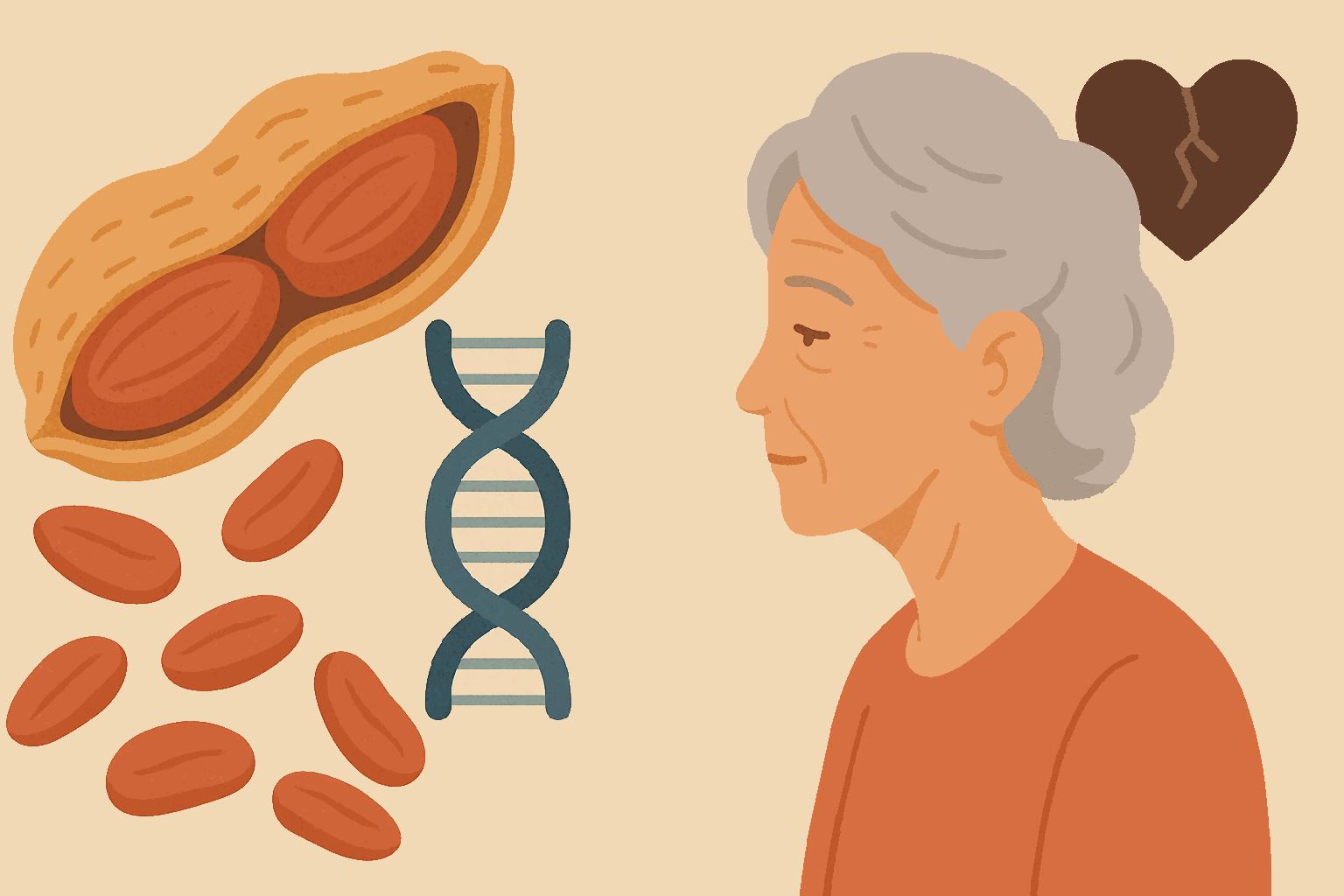
Sedentary Lifestyle & Biological Aging: Why Sitting Ages You Faster
- Marcus Reed
- Health , Longevity , Lifestyle
- May 3, 2025
Table of Contents
Sedentary Lifestyle and Accelerated Biological Aging: Why Sitting Ages You Faster (Even If You Exercise)
In our modern world, many of us strive for regular exercise, believing it’s the key to offsetting the harms of our desk-bound jobs and screen-filled leisure time. However, compelling evidence-based research reveals a crucial distinction: prolonged sitting itself acts as an independent risk factor, potentially accelerating biological aging at the cellular level. This happens even if you meet daily physical activity guidelines. Understanding this link between a sedentary lifestyle and genetic aging is vital for promoting true health and longevity. Let’s explore the science behind the health risks of sitting and actionable strategies for mitigation.
The Exercise Paradox: Why Your Workout Doesn’t Fully Cancel Out Prolonged Sitting
One of the most significant findings is that dedicated exercise, while incredibly beneficial, doesn’t grant immunity from the negative effects of excessive sedentary time. Studies indicate that spending more than 6-8 hours per day sitting is linked to markers of accelerated biological aging, regardless of moderate-to-vigorous physical activity levels. Think of sedentary behavior as a distinct health challenge that requires specific attention beyond just scheduling gym sessions. Reducing overall sitting time is crucial.
Cellular Aging Mechanisms: How Sedentarism Impacts Your DNA, Telomeres, and Stem Cells
The connection between excessive sitting and faster aging isn’t just an observation; scientists have pinpointed specific cellular aging pathways affected by inactivity:
- Telomere Shortening: Telomeres, the protective caps on our chromosomes, naturally shorten with age. Critically short telomeres signal cellular senescence. A sedentary lifestyle has been linked to accelerated telomere shortening, essentially speeding up the aging clock within your cells.
- DNA Stability and Repair: Constant DNA damage is a part of life, but our bodies have repair mechanisms. Physical activity supports these, while inactivity may lead to impaired DNA repair processes and damage accumulation, contributing to cellular decline and genetic aging.
- Epigenetic Alterations: Epigenetics involves changes in gene activity without changing the DNA code itself. Lifestyle factors, including lack of movement, can trigger harmful epigenetic modifications affecting genes related to inflammation, metabolism, and longevity, pushing cells towards an aged state.
- Stem Cell Function: Vital for regeneration and repair, stem cells can be negatively impacted by chronic inactivity. Sedentarism might deplete stem cell reserves or impair their function, hindering tissue maintenance and contributing to age-related decline.
Lessons from Extreme Inactivity: Bed Rest, Spaceflight, and Accelerated Aging
Compelling evidence comes from studies involving prolonged bed rest or simulated spaceflight. These scenarios induce rapid changes mimicking aspects of natural aging – muscle loss, bone density reduction, metabolic issues – demonstrating how lack of mechanical loading and movement signals the body to essentially down-regulate maintenance and repair, accelerating the aging phenotype.
What Constitutes Sedentary Behavior? Understanding METs (Metabolic Equivalents)
To quantify activity, scientists use METs (Metabolic Equivalents of Task).
- 1 MET: Energy used at complete rest (like quiet sitting).
- Sedentary Behavior: Any waking activity using ≤1.5 METs (sitting, reclining).
- Light Activity: 1.6-2.9 METs (slow walking, standing).
- Moderate Activity: 3.0-5.9 METs (brisk walking, cycling).
- Vigorous Activity: ≥6.0 METs (running, swimming).
You can find MET values for various activities in the Compendium of Physical Activities. This highlights that simply sitting, regardless of posture, is metabolically sedentary.
Can Exercise Compensate? The Critical Importance of All-Day Movement
While high levels of exercise (e.g., 60–75 minutes of moderate activity daily) can partially mitigate the mortality risk associated with high sitting time (>8 hours/day), it doesn’t erase all negative effects, especially concerning cellular aging markers.
The crucial strategy emerging from evidence-based research is the need for regular movement throughout the day. Breaking up long periods of sitting with even short bouts of standing or light activity seems vital for counteracting the detrimental metabolic and cellular consequences.
Calculating Your Activity Level: Aiming for Optimal MET-Hours
You can estimate your overall activity using MET-hours. This metric helps quantify your total energy expenditure from physical activities.
Calculation: MET value of an activity × Duration in hours = MET-hours
Example:
- 1 hour, brisk walking (4 METs):
4 METs x 1 hr = 4 METs - 30 mins (0.5 hr), moderate gardening (3.8 METs):
3.8 METs X 0.5 hr = 1.9 METs - Daily Active Total:
4 + 1.9 = 5.9 METs
Setting Your Goal: Minimum MET-Hours for Health Benefits
What’s a good target? [esearch consistently points toward accumulating more than 21 MET-hours per week (average ~3 MET-hours/day) as a minimum threshold associated with a lower risk of mortality.
Crucial Consideration: If your daily sedentary time exceeds 6–8 hours, experts strongly advise aiming for a significantly higher weekly MET-hour goal to better counteract the negative impacts of prolonged inactivity and reduce the health risks of sitting.
Actionable Strategies to Reduce Sedentary Time and Combat Premature Aging
Integrating movement throughout your day is key. Here are practical, evidence-based tips:
- Break Up Sitting: Use timers or apps to remind yourself to stand, stretch, or walk for a few minutes every 30-60 minutes.
- Increase Incidental Movement: Opt for stairs over elevators, park further from entrances, walk during phone calls, pace while thinking.
- Optimize Your Workspace: Consider a standing desk, a desk converter, or even an under-desk elliptical/cycle. Alternate sitting and standing.
- Choose Active Leisure: Replace some screen time with walks, gardening, dancing, or active hobbies.
- Track Sedentary Time: Use wearable technology or apps to monitor your sitting hours, aiming to consciously reduce them.
- Embrace Household Chores: Activities like vacuuming, mopping, or scrubbing contribute valuable MET-hours (and promote a healthy home environment!).
Key Takeaway: Move More, Sit Less for Healthy Aging and Longevity
The link between a sedentary lifestyle and accelerated biological aging is undeniable. While structured exercise remains essential, it’s not the complete solution. Minimizing overall sitting time and purposefully incorporating frequent movement breaks are critical strategies for supporting cellular health, potentially slowing down genetic aging, and enhancing long-term well-being and healthspan. Evaluate your daily routine – are you actively combating sedentary behavior throughout the day? Your future self will thank you.
Disclaimer: This information is for educational purposes and does not constitute medical advice. Consult a healthcare professional before making significant changes to your lifestyle, nutrition, or exercise habits.
